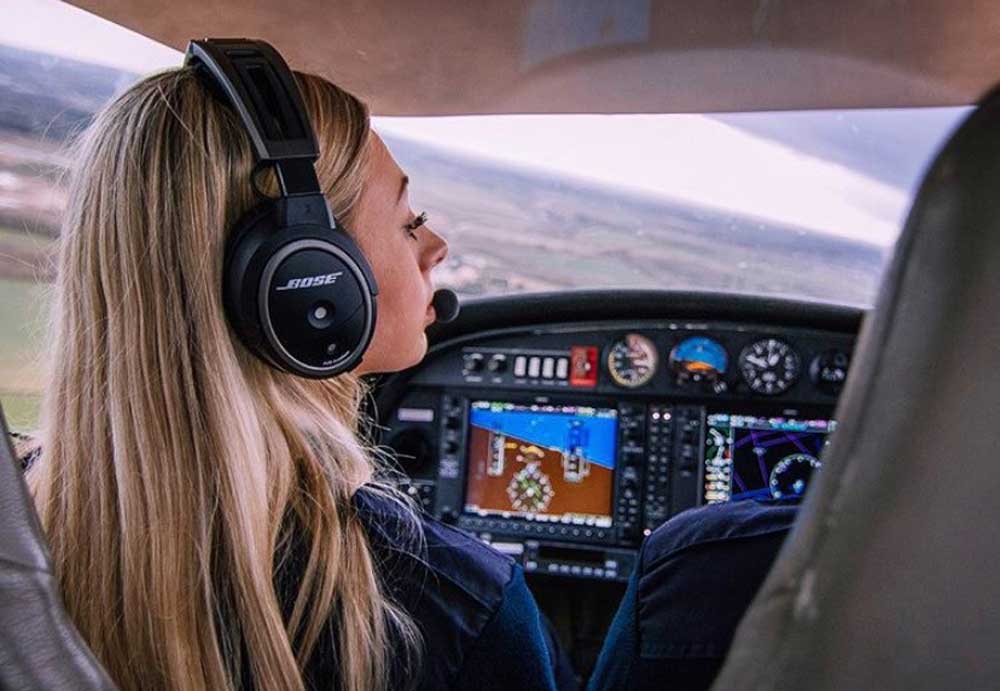
Training as a pilot involves several stages… perhaps the most enjoyable is the actual flight training. Photo: Leading Edge Aviation
Flying across the world at the controls of some of the most sophisticated aircraft in existence, is, for many, a dream job. But the road to a pilot career is not an easy one, with many hurdles to be overcome. Here are some top tips to get you started.
1 Ask yourself: “Why do I want to become a pilot?”
The challenges to reach the cockpit will vary from person to person. Some may face financial challenges on the road to their career, some may struggle with exams and the intensity of pilot training, while some may not enjoy the lifestyle, which often means being away from your family and friends, sometimes missing important occasions due to airline rosters or unpredictable shifts.
So before you even consider embarking on any kind of pilot training, make sure you’re choosing the career for the right reasons. Is aviation your passion? Are you just doing it because you think a pilot’s job is glamorous? Are you pursuing the career because the pay is good? Do you want to wear a smart uniform?
The truth is, while many pilots love their jobs (and their uniforms!), the job does not hold the glamour it once had, with longer hours and changes in airline attitudes, demanding a lot from pilots. Also consider that while starting salaries are traditionally higher than other professions, many pilots will also have taken on loans to cover their pilot training, and so may have to factor in repayments when calculating their starting salary.
Remember, the question “Why do you want to be a pilot?” is one you’ll surely be asked at a pilot job interview, so make sure you’re certain about your answer.
2 Do your research
This links into the first tip; make sure to find out everything about the profession that you can. Get close to aeroplanes, talk to pilots who have already been through training – most pilots will be all too happy to share their own experience and pass on advice to help you. Go to the Pilot Careers Live shows and ask all the questions you need to, until you have a full picture about a pilot’s life, the highlights and challenges, the lifestyle, salary and training.
Find out about the different routes to your Air Transport Pilots’ Licence (ATPL). The two main routes are called Integrated and Modular. The first is a full-time course of study, generally lasting around 15-18 months. This takes a student from complete beginner to a position where they are ready to take up a role as a commercial pilot. In contrast, the Modular route can be done at the student’s own pace, module by module, as time and money allow. What’s more, in most cases the cost is substantially less than Integrated, as you can train in ‘blocks’, allowing the cost to be spread over a longer period, even allowing you to return to work between modules. Both routes will give you the same licence, so make sure to research which route would be best for your career goals and situation.
Also be aware that in the current climate with few airlines offering sponsored schemes, becoming a commercial pilot is a huge financial commitment. Shop around a wide variety of training schools, consider all the different routes and finally, gain experience.
3 Get your pilot medical
Before signing on the dotted line for any kind of commercial pilot training, you should look into obtaining your initial Class 1 Medical, which is necessary for anyone wishing to train for a commercial or airline transport pilot licence. Don’t commit any finances to a full-time course before you’re sure you’re medically fit to fly a commercial aircraft.
And don’t be fooled by some of the myths such as, ‘I can’t be a professional pilot because I wear glasses.’ Contrary to popular belief, you can fly commercial aircraft wearing glasses or contact lenses, as long as your vision is correctable to 20/20. All medicals must be carried out by an approved Aeromedical Centre (AeMC). You can expect the medical examination to take up to four hours. It examines your medical history, eyesight, general physical check, hearing, heart rhythm, lung function, as well as including blood and urine tests.
4 Safeguard your investment
Paying for your professional flight training is one of the most expensive investments you’ll ever make. Whichever route you choose, you’re going to want to make sure that your investment is secure. So what steps should you take?
Once again, research is key. Find out everything you can about your chosen ATO – that’s Approved Training Organisation. How long have they been trading? What links do they have with major airlines? Does your chosen ATO offer a payment protection programme?
Remember, throughout your training, keep your eyes on the bigger picture, in terms of the financial position of your chosen ATO and the industry in general.
And don’t forget the old saying: if it looks too good to be true, it probably is.
5 Finally, don’t give up
The final tip is to keep going. Whichever training route you choose, there is no easy way to the cockpit but keep in mind that once you get there, the view from the office window is pretty special.
Pilot Chloe Harrison passed on her advice when she was training on the British Airways Future Pilot Programme. “It is not a career for those without a deep buried desire. At times it is a struggle but with the end goal of a right hand seat with the best airline in the world, it’s definitely worth it.”
“Training to be an airline pilot is hard,” Chloe added, “and a certain level of intelligence is needed but my advice to all those that may feel discouraged upon hearing this: we’re all normal, yet diligent and motivated people. But together we share an innate aspiration to fly.
“Research the different options you can take, learn about the scholarships on offer and take advantage of them. If you’re reading this and share my love for the aviation industry then I wish you all the best in your careers, GOOD LUCK!”
Don’t forget, a great source of impartial information is Pilot Careers Live, held at a number of locations throughout Europe. These events bring together leading ATOs and airlines to answer all your questions about a professional flying career.
By visiting Pilot Careers Live you can meet leading pilot training academies from Europe, USA and beyond, as well as universities, current pilots and former students. There are also presentations from major airlines and trainers. You don’t need to know anything about aviation to attend, the exhibition is designed specifically to help people who require information and are new to aviation.

